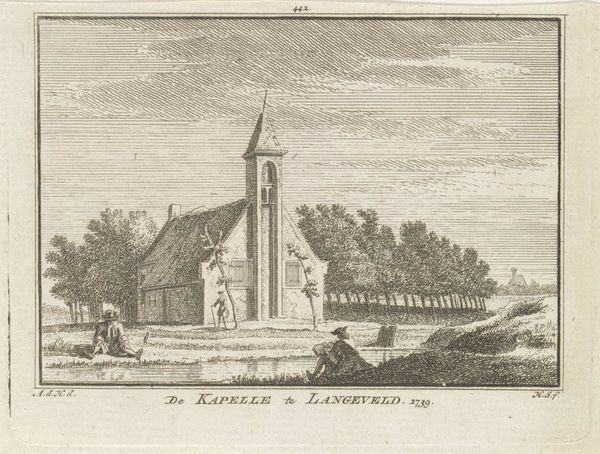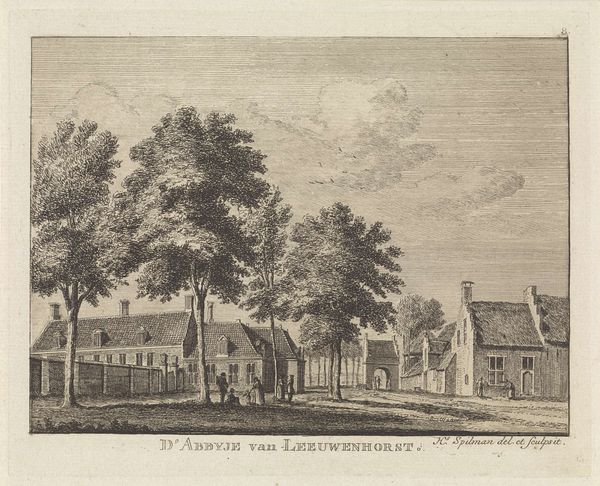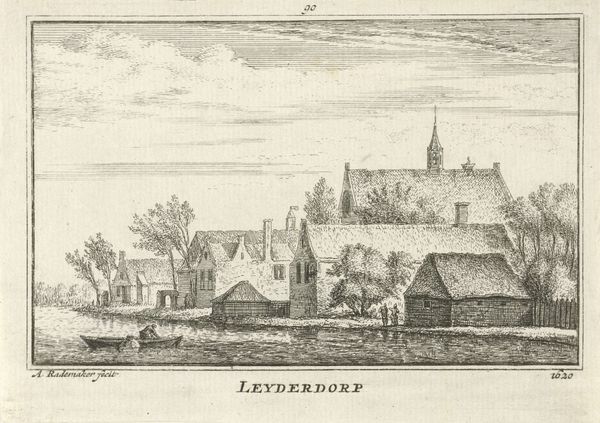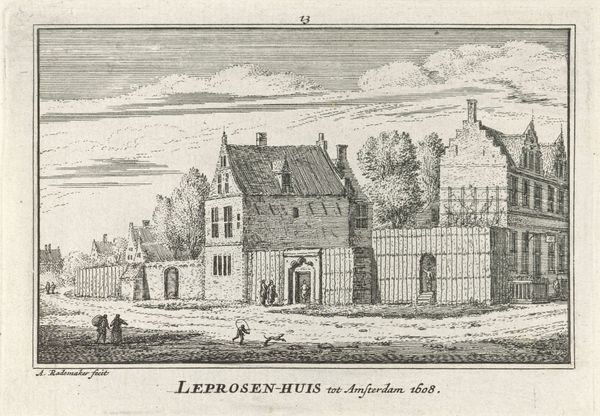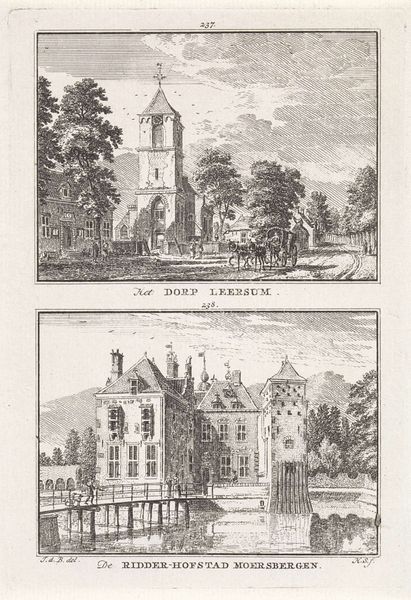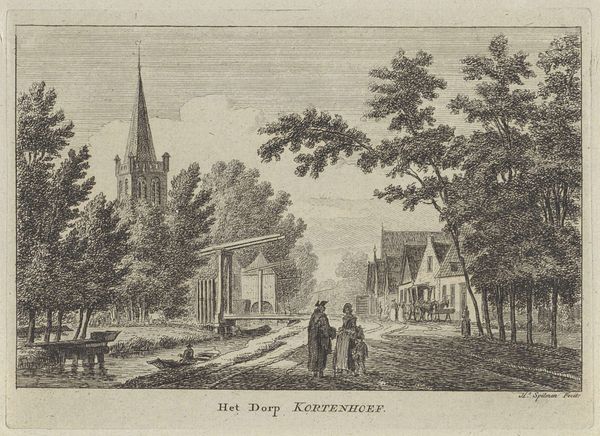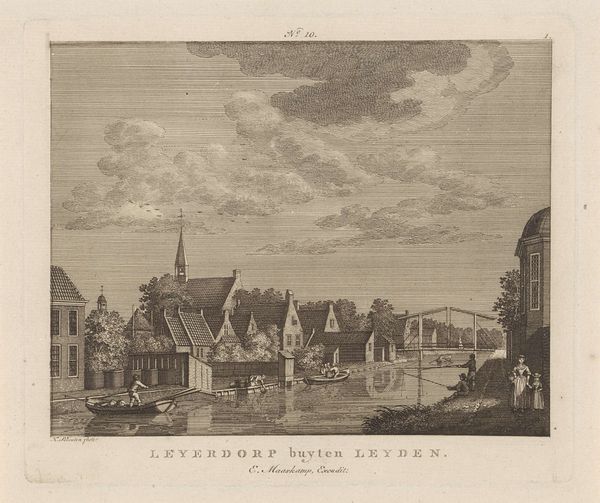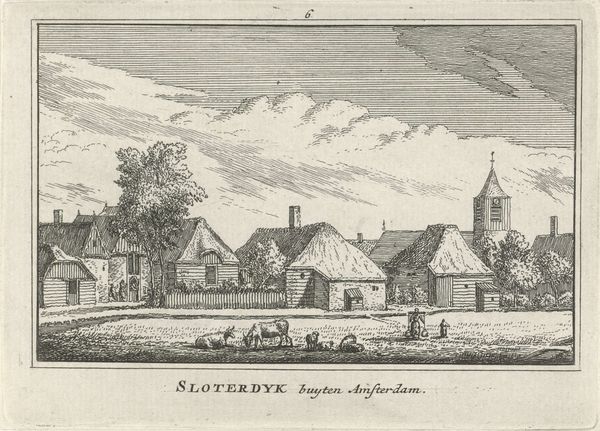
drawing, print, etching
#
drawing
# print
#
etching
#
landscape
#
etching
#
cityscape
Dimensions: height 83 mm, width 112 mm
Copyright: Rijks Museum: Open Domain
Editor: Here we have Abraham Rademaker's etching, "Gezicht op de kerk te Leimuiden", dating to sometime between 1725 and 1803. The texture created by the etching process is quite striking, giving the landscape and church a distinct, almost antiquated feel. What catches your eye in this print? Curator: I'm interested in the material processes at play. Rademaker, working significantly later than the 1641 date etched onto the image itself, isn’t necessarily giving us a straightforward view. Etching, unlike drawing, is a reproducible medium, designed for wider circulation and consumption. So, whose view are we actually seeing? The publisher, Rademaker, or someone else? What's the market context for these kinds of prints? Were they made for the local citizens, or were they made for tourists, say, consuming picturesque views of the Netherlands? Editor: That's a perspective I hadn’t considered. So, it's not just about the image itself, but the intention behind its creation and dissemination? Curator: Precisely. Consider the labor involved—the production of the plate, the printing process itself. This wasn't just Rademaker sketching in a field; it was a deliberate, commercial endeavor reliant on specific materials, tools and collaborative work. Where would Rademaker have learned this etching skill? Editor: So, looking at it that way shifts the focus from simply appreciating the aesthetic, to examining the socio-economic structures that enabled its production. Curator: Exactly. It invites questions about class, patronage, and the developing art market of the time. Perhaps this image romanticizes a rural past even while it functions as a manufactured commodity of the present. Editor: That gives me a lot to think about regarding the context of artistic creation. Curator: It invites a new way of seeing, one grounded in materiality.
Comments
No comments
Be the first to comment and join the conversation on the ultimate creative platform.
